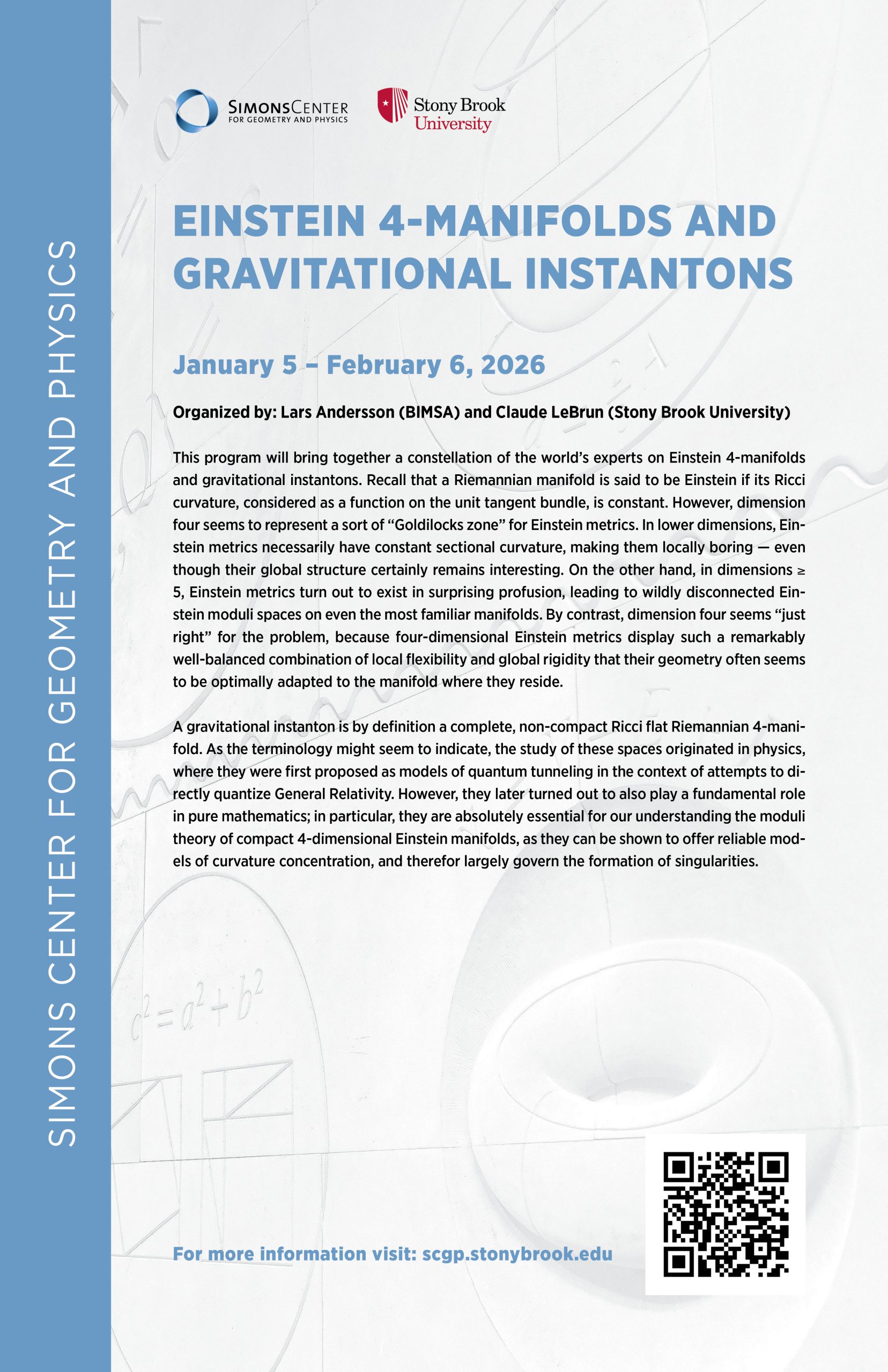Organized by Lars Andersson (BIMSA) and Claude LeBrun (Stony Brook)
This program will bring together a constellation of the world’s experts on Einstein 4-manifolds and gravitational instantons. Recall that a Riemannian manifold is said to be Einstein if its Ricci curvature, considered as a function on the unit tangent bundle, is constant. However, dimension four seems to represent a sort
of “Goldilocks zone” for Einstein metrics. In lower dimensions, Einstein metrics necessarily have constant sectional curvature, making them locally boring — even though their global structure certainly remains interesting. On the other hand, in dimensions ≥ 5, Einstein metrics turn out to exist in surprising profusion, leading to wildly disconnected Einstein moduli spaces on even the most familiar manifolds. By contrast, dimension four seems “just right” for the problem, because four-dimensional Einstein metrics display such a remarkably well-balanced combination of local flexibility and global rigidity that their geometry often seems to be optimally adapted to the manifold where they reside.
A gravitational instanton is by definition a complete, non-compact Ricci flat Riemannian 4-manifold. As the terminology might seem to indicate, the study of these spaces originated in physics, where they were first proposed as models of quantum tunneling in the context of attempts to directly quantize General Relativity. However, they later turned out to also play a fundamental role in pure mathematics; in particular, they are absolutely essential for our understanding the moduli theory of compact 4-dimensional Einstein manifolds, as they can be shown to offer reliable models of curvature concentration, and therefor largely govern the formation of singularities.
There will be a workshop related to this program. For more information please see Conformal Geometry, Einstein Metrics, and General Relativity


